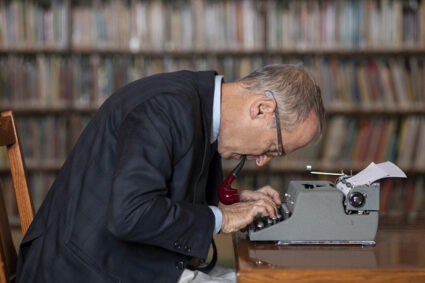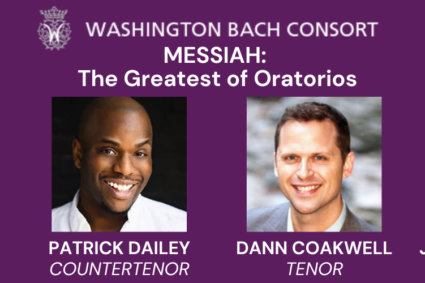
The pipe organ: the king of instruments. Something about the pipe organ has always fascinated me. I know it’s synonymous with church music and I respect that, although I admittedly am not the most religiously devoted (I’ll try to work on that). I actually have been more drawn to the dark, ominous side of the organ. I’m not trying to sound demonic; I just really like the Phantom of the Opera and Dracula-themed scores. That’s why when I found out about Cameron Carpenter and heard his rendition of Bach’s Toccata and Fugue in D minor, I nearly flipped my wig. Last Friday night I had the remarkable opportunity to see him perform live at the Music Center at Strathmore.
Cameron performed on a digital pipe organ. He is probably one of the biggest advocates for the digital pipe organ and understandably so. The traditional pipe organ is this monolithic structure bound to the wall. This really limits where you can perform. The organist has the fantastic challenge of adapting to an instrument he’s not familiar with and often has never even played on before. That’s no small task when the pipe organ can vary from having one to two dozen pipes to as many as over two thousand. I would rather Cameron have the ability to connect with the audience through instrumental familiarization and sound incredible. But I still think it would be cool to hear him perform on the amazing church organs like the one at the Basilica of the National Shrine of the Immaculate Conception. Could you imagine him playing Bach’s Toccata and Fugue in D minor there?
http://www.youtube.com/watch?v=zrzCgIUDdOY
Cameron didn’t include Toccata and Fugue in D minor in his program tonight. Instead he opened with Bach’s Cello Concerto No. 1, which was really interesting hearing on pipe organ. He started the infamous cello solo with only his feet using just the pedalboard. It was actually quite elegant. He finished off the suite with what I would call a transposed manual (keyboard) improvisation. Cameron doesn’t consider himself a jazz musician but does utilize an impromptu style when translating classical scores not originally intended for pipe organ.
It’s funny, for some reason watching Cameron perform was reminiscent of somebody at the controls of a large spacecraft. It suited the Strathmore nicely. Incidentally they have an artist’s piece on loan just outside the music center from Lee Bontecou which is a three dimensional piece in the shape of rocket thrusters. It was like we boarded a spacecraft. Kind of ironic especially when you consider during its time of prominence the pipe organ was the most complex man made device. It’s all about optimization as you can get the sound of a full orchestra out of one instrument, similar to synthesizers and digital software utilized today. I would say the pipe organ has more in common with these than even the piano. It’s due to the simple fact that you can layer the music with different sounds, symphonizing different instruments. Also when you strike the keys of the organ the sound emanates for as long as have them pressed down unlike the piano which quickly dissipates. So really in concept the pipe organ could still be considered one of the most modern instruments even today and that’s absolutely spellbinding considering it’s over 2,000 years old.
Cameron also included the works of Franz Liszt into his program. I was thrilled when he announced this; Franz Liszt is my favorite classical composer. La Campanella, which Cameron playfully described as impossible, was a masterpiece! Never had I seen such intricate finger techniques. Maybe George Li (piano), but Cameron played these elaborate scales across an array of three manuals whilst stretching his hand utilizing two manuals synchronously and playing scales on the pedalboard. He described it as impossible and I can see why. In my eyes I just witnessed a miracle! During the performance I had to stop and contemplate how in the world he is doing this! Even just listening to it was almost too much to comprehend. It was an astounding piece no doubt. Another technique of note was the detailed dynamics. Unlike normal orchestral dynamics where you have to “play softly” or use a pizzicatos, certain ranks allow you to play aggressively at a low volume. I found this captivating.
Towards the ladder of the concert Cameron proceeded with a double encore, and nobody left until they were absolutely sure he was finished playing while proceeding with an ovation. Cameron may dress real flashy, like the glam rocker of classical repertoires but really is quite modest. I don’t want to use the word genius, that word often gets thrown around and I’m sure Cameron himself wouldn’t even consider himself a genius. He is an amazing performer, very knowledgeable and opinionated. There’s no way you can see one of his concerts without learning something. If you ever see the name Cameron Carpenter at any venue you should go see him. You will not forget it and you will not regret it. It’s like witnessing history.





